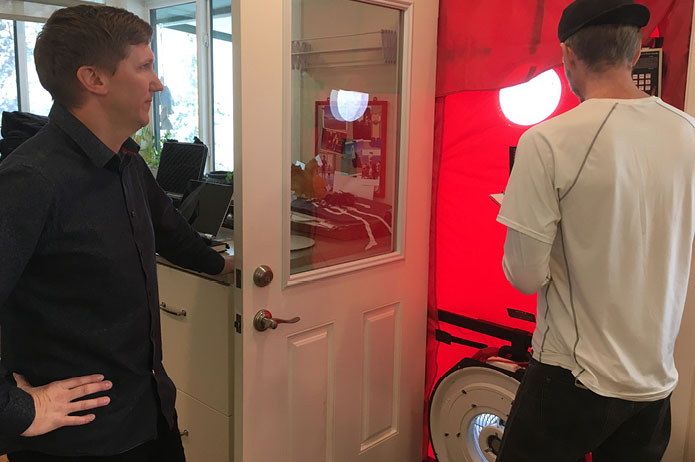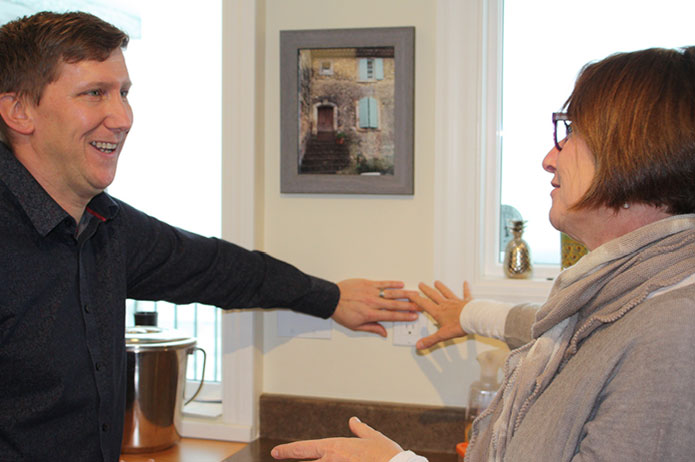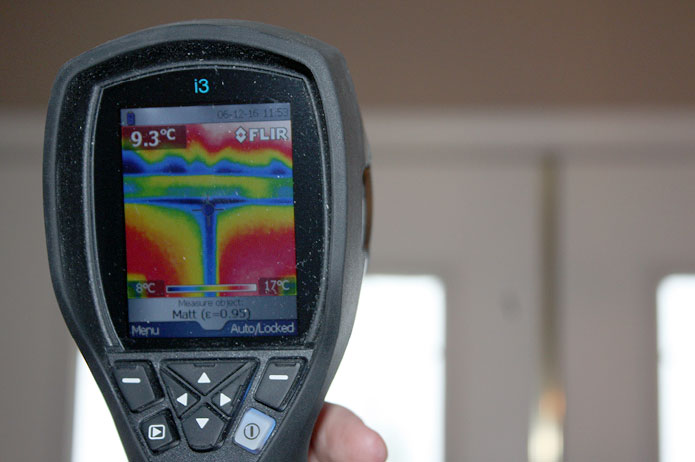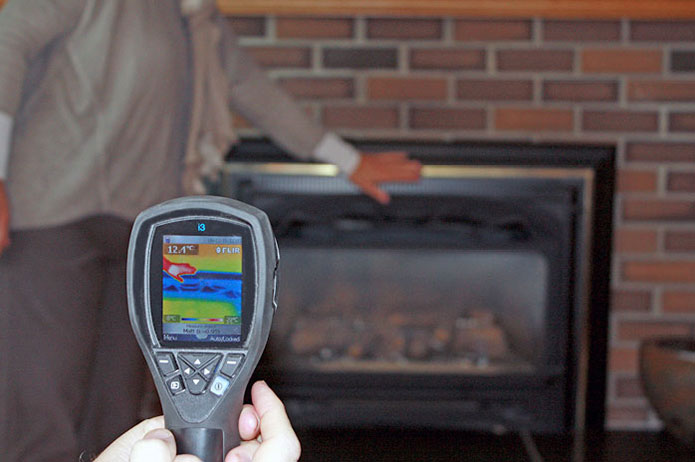Early snowfall provided this savvy homeowner with a heat-loss surprise
December 12, 2017
An early snowfall in Kamloops provided ideal conditions to put a house to a heat loss test and what we found surprised even us.
The home we tested belongs to Glen Cheetham, sustainability services supervisor, City of Kamloops. It’s a well-maintained 1981 home in the Juniper Ridge area of Kamloops that has upgraded windows, draftproofing and increased attic insulation.
An energy advisor certified by Natural Resources Canada put the home through an EnerGuide® home evaluation. During this evaluation, he depressurized the home to measure air turns, that is, how many times the air within the home was replaced within a specific time.
Given that it was a cooler day, it was easy to feel the drafts coming through the power outlets and doorways. A thermal imaging camera also made the trouble spots visible.
“What I saw was very concerning,” said Glen.
The air leaks in his home added up to the equivalent of a half-metre hole – or about the size of a bedroom window. And, at five air turns per hour, Glen’s house is better than average for its age, making it less drafty than a typical B.C. home.
Key areas that were leaking air were his fireplace, patio doors, attic hatch and several walls. In some cases, more heat was escaping from his walls than his upgraded windows.
“I was surprised by the extent of heat loss, given it’s such a well-maintained, finished home,” said Carol Suhan, manager, conservation and energy management, FortisBC, who was onsite for the test. “In many homes, areas of concern are more obvious, for example, exposed areas like crawl spaces and basements you can see need insulation. In this nicely finished house, you couldn’t readily see what needed to be done.”
According to the Province of B.C.’s Community Energy and Emissions Inventory, nearly 30 per cent of the greenhouse gas emissions produced in Kamloops are from buildings, which is why Glen wanted to learn more about his own home and bring broader attention to the issue.
“I also wanted to make my home more comfortable for my young family and reduce my energy bills,” added Glen.
In B.C., more than 50 per cent of energy used in homes is for space heating and it’s common to see higher utility bills during the winter months.
When temperatures dip, it’s the ideal time to check for drafts and install extra draftproofing materials, all commonly available in hardware stores.
Income-qualified customers can order a free Energy Saving Kit with many draftproofing items from FortisBC or book a free home energy evaluation to improve the comfort and saving energy, free of charge.
And if you’re like Glen and want to upgrade your home to be more energy efficient and comfortable, we recommend first having an EnerGuide home evaluation by a certified energy advisor listed with Natural Resources Canada. This will help identify trouble spots and determine your best opportunities for savings. We also recommend taking a look at the many rebates we offer for insulation, windows and doors, draftproofing products and bathroom fans. The Province of B.C. is also providing homeowners with a $150 Energy Coach Home Evaluation Rebate upon completion of a post-upgrade EnerGuide home evaluations.

Glen Cheetham, sustainability services supervisor, City of Kamloops, looks on as his home gets a blower door test to determine air leakage.

Carol Suhan, manager conservation and energy management, FortisBC, shows Glen the drafts around exterior wall power outlets.

The thermal image of Glen’s patio doors showed significant heat loss from the molding and trim.

Heat loss around the fireplace was evident around the metal frame.



